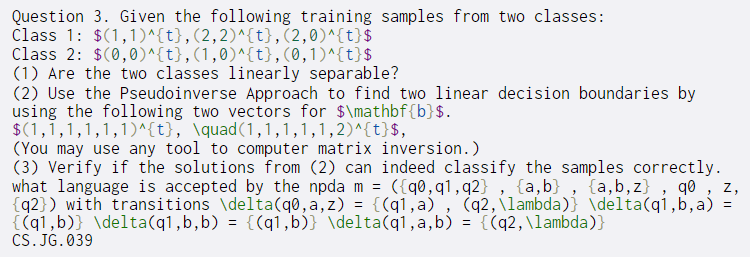Answered step by step
Verified Expert Solution
Question
1 Approved Answer
Question 3. Given the following training samples from two classes: Class 1: $(1,1)^{t},(2,2)^{t},(2,0)^{t}$ Class 2: $(0,0)^{t},(1,0)^{t},(0,1)^{t}$ (1) Are the two classes linearly separable? (2) Use

Step by Step Solution
There are 3 Steps involved in it
Step: 1

Get Instant Access to Expert-Tailored Solutions
See step-by-step solutions with expert insights and AI powered tools for academic success
Step: 2

Step: 3

Ace Your Homework with AI
Get the answers you need in no time with our AI-driven, step-by-step assistance
Get Started


